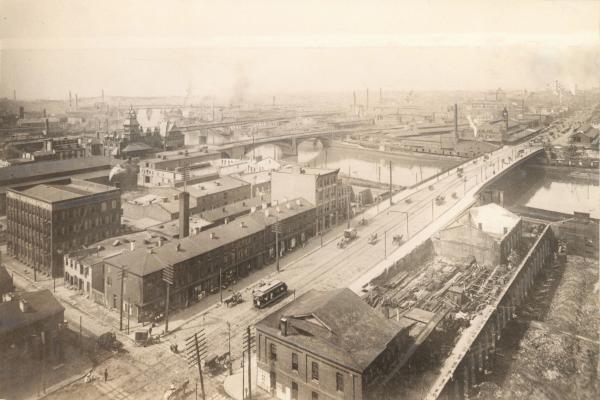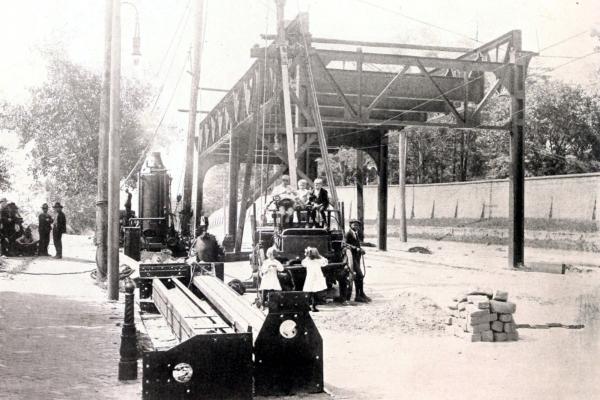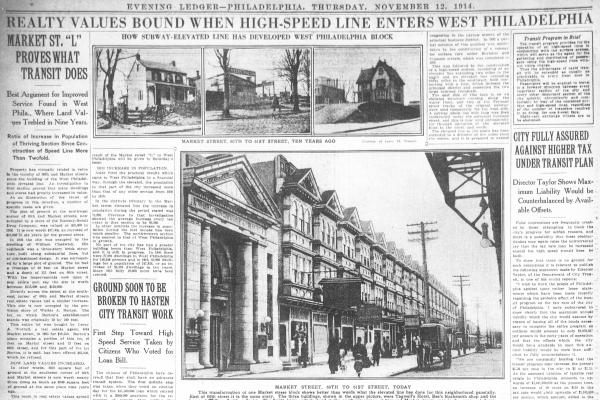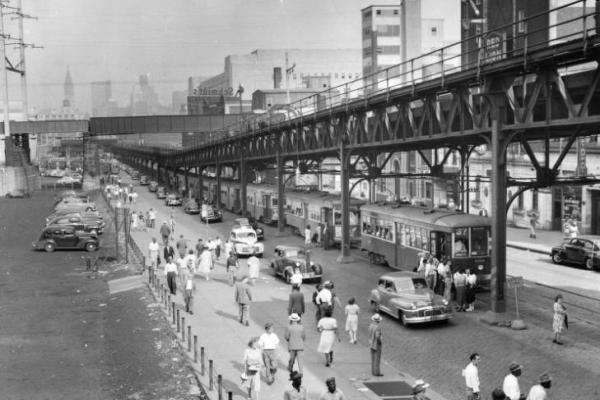An early 20th-century postcard displays the Market Elevated subway at 32nd and Market Streets. This portion of track was demolished in 1956 after subway traffic was moved underground from 32nd to 45th.
The Market Street Elevated or “El” shaped 20th Century West Philadelphia.
Opened in 1907, the Market Street Elevated marked the introduction of rapid transit in West Philadelphia. Carrying trains from 69th Street just west of the city line to the Schuylkill River Bridge, and beyond to a subway portal at 23rd Street, the “El” and its feeder trolley lines provided a major stimulus to population growth in West Philadelphia in the first half of the 20th century. Built by the Philadelphia Rapid Transit Company, a holding company organized in 1902 by the traction moguls Peter A.B. Widener and William L. Elkins, the El loomed above Market Street for nearly 50 years, until it was finally replaced in 1955 by the opening of a tunnel that carried both rapid transit trains and subway-surface trolleys from West Philadelphia, under the Schuylkill, to Center City.
Stories in this Collection
 In the 1890s, electrified trolley lines operated by independent companies displaced horsecars and cable cars as the city’s mode of public transportation. In 1902 the privately formed Philadelphia Rapid Transit Company (PRT) gained control of the independents, setting the stage for the PRT’s 1903 contract with the city to build and operate the Market Street Elevated (“The El”), with a component designated for West Philadelphia. |
 1903–1907 The Market Street Subway and Elevated opened its West Philadelphia service in 1907. The Philadelphia Rapid Transit Authority (PRT) opened three stations along the elevated line from 63rd to 23rd Street, at which point the line operated as a subway to City Hall. By 1908, the line was fully operational between 69th Street (Upper Darby) and Delaware Avenue |
 1900–1930 Opened in 1907, with two miles of tracks running west of the Schuylkill River, the Market Street Elevated spurred tremendous population growth and booming construction north of Market Street in West Philadelphia. The El was also the catalyst for demographic shifts marked by the arrival of Italian, Jewish, and African American communities from other parts of the city. |
 1947–1955 Attributing deteriorating housing and other harmful environmental impacts to the Market Street Elevated, city officials authorized construction of a subway tunnel that reached 32nd Street in the 1920s. Halted during the Great Depression and World War II, construction resumed between 1947 and 1955, when the quasi-public Philadelphia Transit Company extended the tunnel to 45th Street. Here the trains rose from a portal to rejoin the El, which remained intact above Market Street between 46th Street and the line’s terminus at 69th Street. Demolition of the El above the subway tunnel to 45th Street was completed in 1956. |
 The Market Street subway extension was constructed between 1952 and 1955. The project diverted the trolley lines on Woodland Avenue at the University of Pennsylvania into a tube that branched off from the Market Street tunnel at 32nd Street. The trolley extension tube carried passengers under the University campus from Ludlow to 39th Street. |
